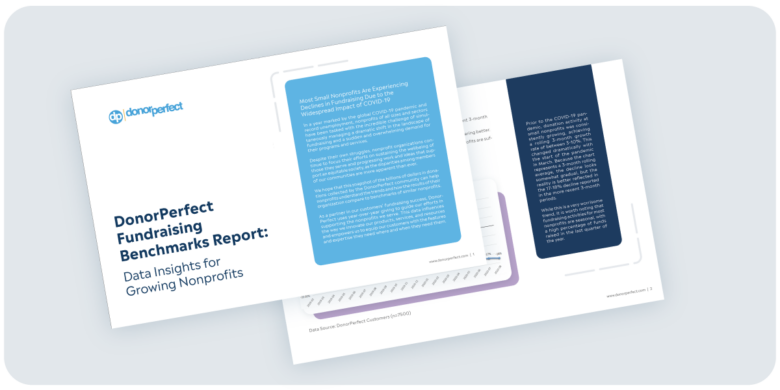Donor Retention Saved Some Fundraisers During 2020

The most significant driver of overall fundraising results during 2020 was donor retention. And, Canadian fundraising got hit a lot harder than those in the United States when it came to overall giving.
Understanding the correlation between donor retention and growth in giving proved difficult when looking at the individual organization level due to the extremely high variability of individual organization data during the pandemic.
There is, however, a very high correlation when segmenting organizations into donor retention deciles. The chart below shows the donor retention rate range and median for each decile, along with the growth in giving percentage.
Data from the The 2020 DonorPerfect Fundraising Benchmarks Report released this week by DonorPerfect, a division of SofterWare, showed that growth in giving during 2020 started when at least 70 percent of a donor base was retained.
Donor retention measures the percentage of donors that gave at least one gift in the prior and current years, but many donors make multiple donations in the same year. While donor retention is easy to measure, it isn’t necessarily easy to improve. But even though developing and executing donor retention strategies requires time and resources, this analysis shows why the effort is absolutely worthwhile, according to the report’s authors.
Access to MinistryWatch content is free. However, we hope you will support our work with your prayers and financial gifts. To make a donation, click here.
A primary factor that can influence donor retention, according to data in the report, includes the method used to acquire the donor. For instance, while peer-to-peer fundraising can be a great way to generate new donors, these donors typically give because of their relationship with the person soliciting the donation and less because of a strong affinity for your organization. As a result, they might be much less likely to give again compared to a donor that gives because they discover your organization through their own research or they’ve engaged with your organization more directly, such as by volunteering.
Since the start of the pandemic, managers at many nonprofit organizations shifted the majority of their donor acquisition strategy to online fundraising. By staying active on social media, sending emails, and hosting virtual events, fundraisers have kept engaging their donor community even in the age of social distancing.
The analysis below shows that larger organizations have significantly more donors that give two or more donations within a 12-month period and also have more donors participating in monthly giving programs. These differences are likely factors in the higher donor retention rate achieved by organizations of this size.
Although this report combines U.S and Canadian organizations, Canadian nonprofits recorded a more significant decline with much of the difference driven by Q4 fundraising results (-10.9 percent for Canada vs. -4.5 percent for U.S.).
Other data points include:
- The pandemic had a dramatic impact on giving with median giving down 5.2 percent in 2020. Giving levels have been slowly recovering since Q2 but still remain below 2019 levels with Q4 median giving down 5.1 percent.
- Fundraising results varied dramatically by the type of nonprofit. The only sector to achieve positive giving growth, the Human Services sector ended the year up 1.6 percent. The weakest performing sectors included Arts, Culture & Humanities down 14.2 percent for the year and Education down 13.1 percent.
- Results varied by organization size, with smaller nonprofits suffering the largest declines during the pandemic at -7 percent, while medium-sized organizations experienced a decline of -5.5 percent and larger organizations fell to just -3.6 percent.
To see all of the data, the report can be downloaded here.



